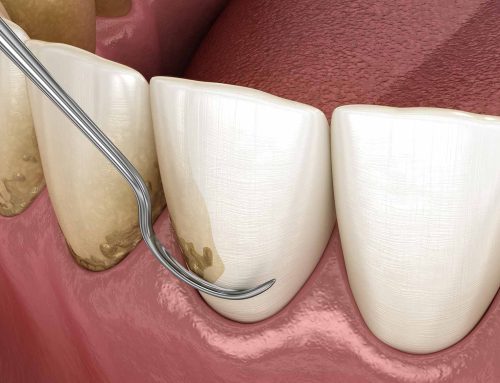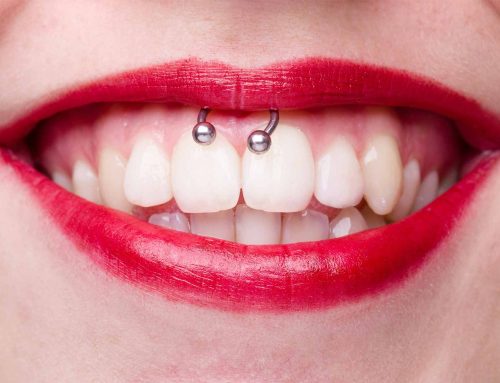Have you noticed white patches on your teeth? While they may less obtrusive than yellow or brown stains, they’re no less unpleasant or worrisome! What causes them, and more importantly, how can you get rid of them?
These white deposits are generally benign. However, it’s still a good idea to mention them to your dentist once you become aware of them, as they could be a symptom of a more serious medical condition.
In a society that values a brilliant, perfect smile, stains—even white ones—can lead us to develop a complex. So you’ll be happy to learn that there are solutions available to help you rediscover the pleasure of smiling. There are also some simple tricks to help you prevent the appearance of white patches.
Causes and consequences of white patches on the teeth
It should come as no surprise that one of the main causes of white spots on the teeth is dental plaque. This bacterial buildup can lead to the accumulation of yellow or white deposits. The long-term risks? They can damage the enamel, leading to decalcification. Luckily, good oral hygiene can prevent this extreme consequence. Brushing for two to three minutes after each meal, along with flossing or using a water pick, will ensure optimal protection against the development of white patches.
Unfortunately, not all cases are so simple. For example, fluorosis is a more vexing problem, as once it occurs, it won’t go away. What is it exactly? This pathology is the result of excessive exposure to fluoride when the teeth are developing, which happens between the ages of one and four. Sometimes, less is more: while fluoride is recognized for its beneficial effects on the enamel, when it is consumed in excess, it can also be harmful and lead to the appearance of white patches on the teeth.
While it’s possible to improve the appearance of the affected teeth, there is no definitive cure for fluorosis. This is one of the reasons behind the information campaigns targeting pregnant women and the parents of young children, aimed at raising awareness of the dangers of drinking water or using toothpaste with too much fluoride.
Another lesser-known cause of white patches is enamel hypoplasia. Behind this ineloquent term lies a defect in the enamel that not only weakens it, favoring the appearance of cavities, but also leaves stains on the teeth. Various elements can trigger hypoplasia. Some of these should come as no surprise: tobacco, premature birth, child malnutrition, congenital defects, vitamin A, C and D deficiencies and the use of antibiotics from the tetracycline family during pregnancy.
The fact that white patches can be a consequence of cavities negates the common misconception that cavities are always black. In fact, these spots represent the initial stages of tooth decay, which subsequently darkens.
There are other less common causes, including certain medications and trauma to the roots of baby teeth. On the other hand—and this also applies to the nails—white patches are not the result of a calcium deficiency. Obviously, your dentist is the best person to give you a precise diagnosis of the problem and an appropriate solution to treat it.
Preventing and treating white patches
Among the simplest actions, brushing is undoubtedly the easiest way to overcome these patches. You also shouldn’t hesitate to review your eating habits to target any items that could promote the appearance of white spots. If you consume sweets, lemonade or alcohol, you should do so in moderation. And if you smoke or take medication, talk to your specialist to learn about the risks. Taking care of your teeth, adopting irreproachable oral hygiene and teaching your children good habits from an early age will help you avoid and impede these inconveniences as much as possible.
You may be wondering, however, what professional solutions are available if you already have white patches on your teeth. The most effective one is teeth whitening. Its dual action removes stains and brightens the enamel. Since the hygienist will perform a tartar removal procedure beforehand, you can be sure that you’ll leave your dentist’s office with a healthy mouth and a sparkling smile. The results are quick and effective, and to ensure that they last a long time, you must continue brushing your teeth in accordance with the good habits mentioned above.
Dental veneers are recommendable in the event that whitening is impossible or the stains are too widespread. Veneers are thin ceramic or resin shells that are bonded to the teeth. This quick, simple, painless procedure offers the advantage of adapting to the shape and color of the original tooth without the necessity of devitalizing it. The drawbacks? Veneers can damage the enamel, and depending on the material used, the results may not be optimal. Ceramic veneers can last up to 20 years, but they’re also very expensive. While resin veneers are more affordable, they will only last from two to five years.
In the case of teeth that are severely damaged, devitalized or affected by cavities, crowns or caps are the most recommendable solution. Resistant and durable, they are placed directly on the teeth, which the dentist has milled beforehand. This irreversible process may be intimidating to some people, which is why it’s important to discuss it with your specialist to find out if is the best alternative for you or your children.
Regardless of the cause you suspect, there’s no better way to be sure than to consult your dentist. You can count on the professionals at Clinique Dentaire Charles Trottier to reassure you, advise you and find the solution that’s most suited to your needs. Their approach? They’ll take care of you and your oral health, thus ensuring your well-being.
Sources :
Philips – Hygiène dentaire. Taches blanches sur les dents : que faire ? [What to do about white stains on the teeth] 2021.
Dentaly.org. Taches blanches sur les dents : comment les éliminer ? [How to eliminate white stains on the teeth] 2020.





